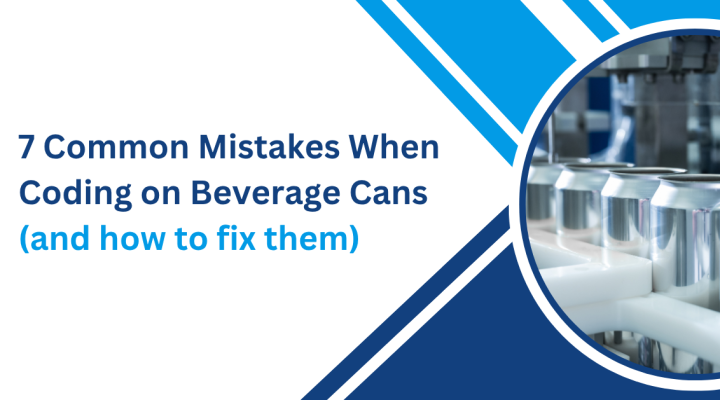
Whether you're marking expiry dates, batch codes, or promotional data, the right approach to coding on beverage cans will save time, money, and rework. But too often, manufacturers fall into avoidable traps that compromise quality and efficiency.
In this post, we’ll walk you through the 7 most common mistakes made when coding on beverage cans - and exactly what to do instead.
Before diving into the mistakes, it's important to understand what you're working with. Beverage cans vary not just in content, but also in surface coatings and structural characteristics that affect how ink or laser coding behaves.
Some cans have a lacquered outer coating (matte or glossy) that protects branding or enhances aesthetics. This can influence ink adhesion or laser visibility.
Flavoured seltzers, craft beers, or limited-edition drinks may use custom coatings or foil effects. These require tailored coding solutions to avoid damaging the finish or reducing legibility.
The Mistake: Many producers’ default to generic inks or coding systems without considering the can’s surface treatment.
The Fix: Match the technology to the surface. For aluminium cans:
The Mistake: Coding systems that don’t sync with line speed or positioning often lead to smudges, misplacement, or unreadable codes.
The Fix: Integrate your coding equipment into the line with encoder and product sensor feedback. Adjustable mounting and precision timing reduce errors, especially on high-speed canning lines.
The Mistake: Not accounting for ink dry time on aluminium leads to smudging, especially in wet or high-humidity environments.
The Fix: Use fast-drying solvent-based inks developed specifically for non-porous substrates like metal. In high-moisture areas, consider laser coding, which doesn’t rely on drying at all.
The Mistake: Placing codes over logos, artwork, or regulatory information reduces both aesthetics and compliance.
The Fix: Work with a coding expert to map the ideal coding zones on your can. Bottom domes, under the rim, or the shoulder of the can are common discreet yet visible areas.
The Mistake: Variations in print height, contrast, or legibility due to unstable product handling or vibration.
The Fix: Use stable conveying, product handling systems, and standoffs to ensure even spacing and consistent coder-to-can distance. For laser systems, ensure a clean and vibration-free line environment.
The Mistake: Codes that are missing required data like expiration dates, batch numbers, or traceability info.
Stay updated on local and global food safety standards, and use coders with dynamic data capabilities (such as auto-updating time stamps, counters, or barcodes).
The Mistake: Installing coding systems that can’t scale or adapt to different can types or content changes.
The Fix: Invest in modular, upgradeable coding systems. CIJ printers with multiple ink types or lasers that can be retuned for different coatings offer longer-term flexibility. Think not just about today’s production, but tomorrow’s growth.
At IPS, we specialise in coding on beverage cans - from selecting the right ink or laser solution to line integration and regulatory compliance. Whether you're a craft brewer scaling up or a major beverage producer looking to optimise uptime, we offer:
Coding on beverage cans may seem like a small step in the production chain, but when done wrong, it can lead to big problems - downtime, recalls, or brand damage. By avoiding these 7 common mistakes and partnering with the right experts, you ensure your coding is as strong and consistent as the product inside the can.
Need help choosing the right solution for your line? Contact us today for a free consultation or line assessment.